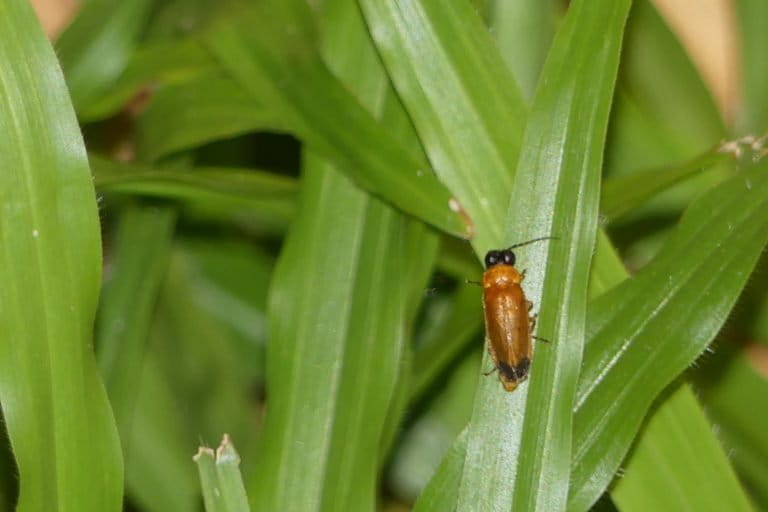
Light shows put on by fireflies are not just a fascinating sight. The genes responsible for this luminescence have many applications from medicine to forensics to food safety testing.
Compared with other countries, fireflies have not been well-studied in India, especially in southern India. But in 2019, a researcher from the Tamil Nadu-based National Centre for Coastal Research detected a drastic decline in the population density of a species of firefly in Barrankula village in Andhra Pradesh compared to 1996, 23 years ago.
The decline in firefly population density has ecological and conservation implications, said project scientist Ramesh Chatragadda and lead author of the study. “Based on literature and local environmental conditions, pesticides are believed to affect the firefly population,” he said, adding that climate change could also be a factor.
Fireflies are beetles comprising around 2,000 species, but only some can glow. Using a chemical reaction, males are able to produce their own light, known as bioluminescence, which is used to attract females for mating. The light emitted by fireflies consists of different colours such as yellow, green and even light red in some cases. Each species displays a unique pattern of light flashes. This process is highly efficient with almost 100% of the energy converted to light. Fluorescent light bulbs, in comparison, convert only about 85% of energy to light.

Disappearing lights
Chatragadda estimated the population density of Abscondita chinensis, a species of firefly, in Barrankula village, in Andhra Pradesh. Located in a coastal region, the study site in the village consisted of marshy grasses along freshwater canals along a tar road, which was surrounded by paddy fields. Late at night, these charismatic beetles settle on grass and plants or in some cases take off in short flights.
To estimate the present population density, Chatragadda counted all fireflies at rest or during flight along a 10-metre transect line in January 1996 and February 2019. Between this time period, he did not collect data assuming that the population density would remain fairly constant.
Also read: Why India’s Insects Are Disappearing
But he found a drastic decline in the population of A. chinensis in marshy areas from over 500 individuals in 1996 over a 10 square-metre area to a mere 10-20 individuals counted in 2019.
“It’s a pity that the counts were only made at two-time points that were spaced 23 years apart: in-between maybe there was a steady decline, or maybe a sudden decline, or the maybe firefly abundance fluctuates a lot from year to year − we really don’t know,” said Sara Lewis, professor at Tufts University in the US, who has published the book Silent Sparks: The Wondrous World of Fireflies.
“Insects are well-known for having huge year-to-year variation in abundance − this is something that could be ruled out by having more data from the intervening years.”
In between 1996 to 2019, it was not predicted that they will decline, said Chatragadda. “Based on recent literature, I have revisited the sites and confirmed with local people. They witnessed the decline of the firefly population.”
V. P. Uniyal, a scientist at the Wildlife Institute of India in Dehradun, Uttarakhand, who was not involved in the study, said that such studies and monitoring efforts have been scarce in India. “It’s a good attempt and need of the hour for the conservation of bioindicators for monitoring climate change and other factors.”

Illuminating the role of pesticides
Although the causes of the decline are unknown due to lack of data, it is believed that the main contributing factor may be the use of synthetic pesticides in the paddy fields around the study site. Chatragadda hopes to study the role of pesticides in firefly reproduction and survival.
Lewis, along with a group of scientists from the IUCN (International Union for Conservation of Nature) Firefly Specialist Group established in 2018 to assess the conservation status and extinction risks to fireflies, published a perspective piece in BioScience in February. They conducted an email survey of 350 people worldwide from a scientific organisation called Fireflyers International Network to gain an insight into the perceived threats to fireflies in the regions the scientists are located in. Among these, the answers of 49 experts who responded to all threats were used.
The results revealed that the most serious threats in eight regions from highest to lowest were habitat loss, light pollution from artificial night lights and pesticides. Although there were only two respondents from South Asia, they considered habitat loss and pesticides to be the greatest threats.
Also read: A Bug’s World: the Story of How Wings Set Insects Free to Colonise Earth
Agricultural insecticides such as organophosphates and neonicotinoids are also known to affect non-target insects including fireflies. Insecticides can affect these iconic beetles indirectly such as by reducing the availability of their prey or through direct exposure.
“The upshot is that we don’t know a lot”, said Lewis, adding that some studies show harmful effects on larvae and adults of some firefly species. Larvae are particularly at risk of insecticide exposure in the soil and water, the authors pointed out, because they develop for months to years underground or underwater.
Neonicotinoids, a class of insecticides, linked to plummeting bee populations, have been banned for outdoor use in Europe in April 2018. In India, however, many pesticides that are banned elsewhere continue to be in use and pesticides are used not only in high quantities in India but also in an unscientific way.
“We need to figure out which of the world’s 2000+ firefly species are most at-risk, and then start up regular monitoring programs to gather information on their long-term population trends,” said Lewis. “This is where citizen scientists – like the local residents in Andhra Pradesh – could really help a lot!”
The article was originally published on Mongabay. You can read it here.

